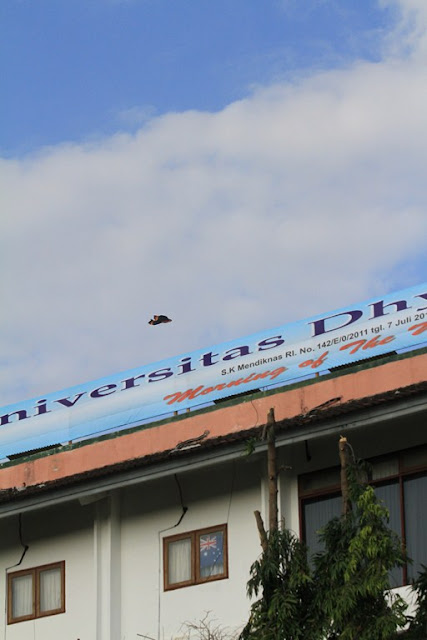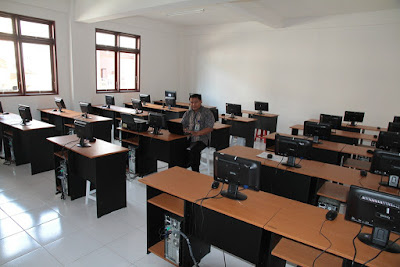 |
| No special occasion would be complete without several of these |
On Thursday 25th August, 2011, the Dhyana Pura college held the Wisuda for PPLP students receiving certificates and diplomas across a range of hospitality and tourism study areas. Apart from the change of venue, it was very much like Wisuda XXV. That’s a simple observation, not a criticism. I enjoyed the Wisuda last year, so for me "familiarity" was welcome, and a reminder of last year’s event with its familiar activities. Besides, most of the students only have a single Wisuda ceremony and celebration, so for them it will always be unique.
 |
| Ika holding the memento each student receives at the Yudisium |
 |
| Fabbi checks that the Director has the correct trophy |
If you recall my blog of last year, or check it in the Archives (at right of screen entry of 29/8/11) you will notice that this blog, like the Wisuda itself, is just like last year! To repeat last year’s note, the end of course awards procedure is a 2 stage process. The first stage - Yudisium - is an in house, no frills occasion for the students only (and volunteer teachers!). That was held last Tuesday (23/8/11). The successful students are congratulated by the director and 3 vice-directors, and they receive a personalised memento of their time at the college. They hear a range of formal speeches, and presentations by 3 recruiting agents.
 |
| Students hold their trophies and listen to speeches |
Two days later is the Wisuda, a more formal, more colourful affair to which family members are invited. The boys wear formal college uniform with blazer, but the girls come splendidly attired in national costume, and with hair specially coiffed and held in place by beautiful jewellery. Student welcomers and helpers are dressed formally in traditional costume and look very beautiful (or handsome) and colourful.
 |
| The girls arrived at 5 to begin dressing and applying makeup (that's me in the mirror - just to prove I was really there) |
 |
| Kawi and Ika welcome guests to the occasion |
 |
| Ayu, Juni and Putri dressed in formal costume look very different to the shy young students I recall from last year. |
 |
| I Made Mudayasa, student and member of the college housekeeping team, with Ika before the presentations |
 |
| Dhyana Pura dancers at the start of the event |
 |
| The "Wibusani" gamelan band members watch and keep time with the dancers |
 |
| Mr Eko and Bu Widya manage the student movement to the stage |
 |
| Ni Luh Putu Wiranti, college housekeeping team member, proudly displays her certificate. |
 |
| Arista, one of my English students, prepares medals for presentation |
 |
| Top student Cherish leads students in the Oath of Allegiance |
 |
| Top students and prize winners receive recognition from the audience |
 |
| Yeni and Eko (Mr Personality) manage the "door prize" draws |
An enjoyable buffet in the dining room beside the beautiful pool with sea views followed the formal event. Just as at the STIM Wisuda luncheon, “English bread and butter pudding” was on the desserts table. It’s one of my favourites from way, way back.
Another Wisuda. New places, new faces, but pleasingly much the same as last year – the way I liked it. Congratulations and thanks to students and staff, helpers, and all who welcomed me to their celebration
Paul in Bali
More photos can be seen in my Web Album "PPLP Wisuda". You can access them via the blog entry: "Photo Gallery - PPLP Wisuda XXVI" in the Archive section of this Blog page.
-or-
Click the link
https://picasaweb.google.com/110038041647560744460/PPLPWisudaXXVI#
to enter the Web Album to view the pictures. Please note that the last image is a
LARGE movie file, so do not attempt to view this across a slow network connection.


































